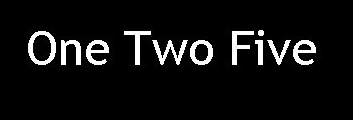
The 125 Executive Jet
de Havilland DH125, Hawker Siddeley HS125, British Aerospace BAe 125, Hawker 125 and Hawker 800/850
de Havilland DH125
In April 1961 de Havilland, by then a part of Hawker Siddeley Aviation, announced that it had started work on a jet replacement for the popular Dove. Initially it was going to be called the DH125 Jet Dragon, as a recognition to the highly respected Dragon Rapide. Though the name, Jet Dragon, didn't last into the prototype stage.
Hawker Siddeley HS125
In 1963 decision was made by Hawker Siddeley to rebrand all products of its subsidiary companies as Hawker Siddeley. de Havilland became a division of the Hawker Siddeley group back in 1960 but its products were still branded de Havilland until 1963. Thus the aircraft became the HS125.
British Aerospace BAe125
In 1977 the British Aircraft Corporation merged with Hawker Siddeley to form British Aerospace. The 125 then became the BAe 125, with the 125 being part of BAe's Business Jets Division.
Raytheon / Hawker / Beechcraft
This division was sold to US company Raytheon in 1993 who called the new company Raytheon Corporate Jets and there was the occasional reference to the aircraft as the Raytheon 125, but the company were keen to use the name Hawker to show the lineage of the aircraft from Hawker Siddeley. In 1994 Raytheon merged Beechcraft, which it had owned since its purchase on 8 February 1980 with the Raytheon Corporate Jets to create Raytheon Aircraft Company. In 2002, the Beechcraft brand was revived to again designate the Wichita-produced aircraft.
Hawker Beechcraft
In 2006, Raytheon sold Raytheon Aircraft Company to Goldman Sachs creating Hawker Beechcraft. The name 125 was dropped in favour of just Hawker 800, Hawker 850 etc. On 3rd May 2012 Hawker Beechcraft entered bankruptcy and the production of the 125 ceased. The company emerged from bankruptcy on 16 Feburary 2013 as Beechcraft Corporation. It was decided that jet aircraft production would not recommence and the name Hawker Beechcraft would be retired.C-29, U-125 and the Dominie
Of course, Military operators of the 125, of which there are many. never seem to call any aircraft by its proper name. The Royal Air Force called used the name name Dominie T Mk1 for their original Series 2 aircraft. Their series 400 aircraft became the HS125 CC Mk 1. The series 600 aircraft became the HS125 CC Mk 2 and finally the series 700 aircraft were named the HS125 CC Mk 3.
The United States Air Force (USAF) designated their 125 aircraft as C-29 and use them for calibration work. Where as the Japanese Defence Force names their flight inspection examples as U-125 and their search and rescue aircraft U-125A